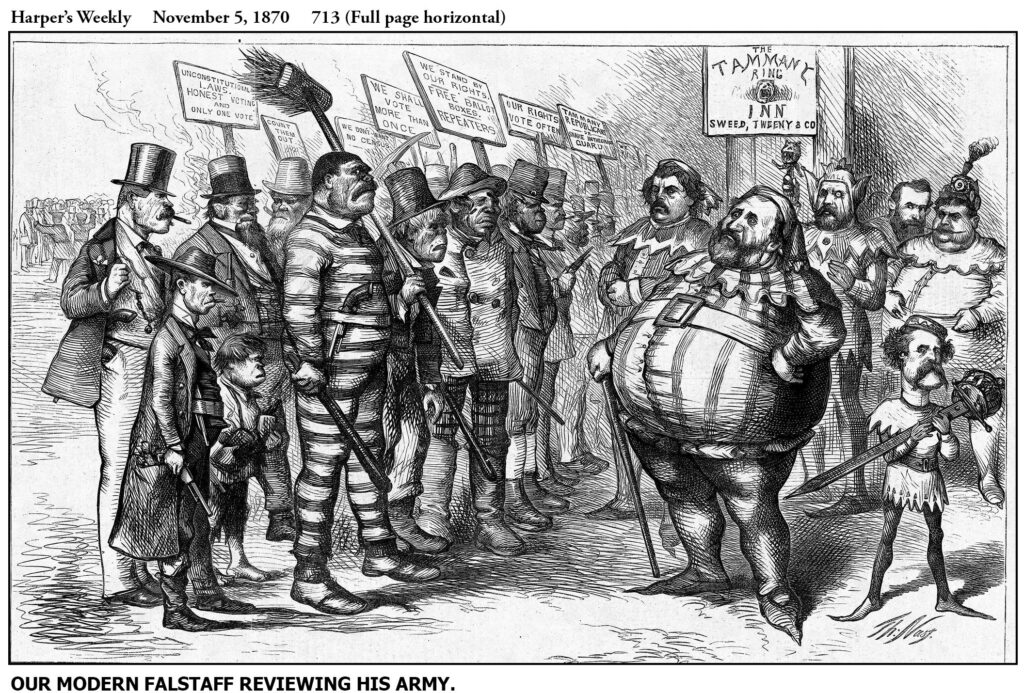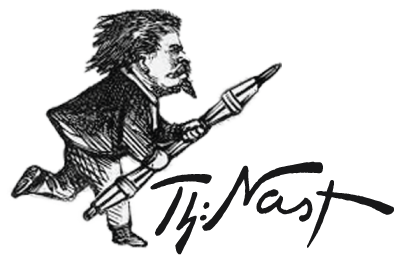
Harper’s Weekly – November 5, 1870
The Irish support for the Tweed Ring peaked on Election Day when they were to vote illegally in as many election districts as possible, using false identifications and addresses — taverns, brothels and vacant lots included. In 1870, Mayor Oakey Hall created additional election districts to make repeat voting easier and less traceable.
Each district was supposed to have four inspectors, two from each party, to watch the actual voting. The Ring used bribes, drugged drinks, threats and even false arrests to neutralize Republican inspectors, facilitate repeat voting, and stuff ballot boxes. In 1868, Sheriff James O’Brien (who would later play a key role in the Ring’s downfall) appointed 2,000 ruffians as deputy sheriffs with orders to arrest anyone who interfered with voting.
Nast subsequently depicted Boss Tweed as Falstaff, capturing the essence of his memorable “Army,” with Governor John Hoffman, the front for the Ring, as a diminutive royal jester in front. (Falstaff was commissioned to raise an army for Shakespeare’s King Henry IV, but he allowed the able-bodied to bribe their way out of service, and replaced them with the poorly-paid old, feeble and unfit, pocketing a handsome profit for himself.)
